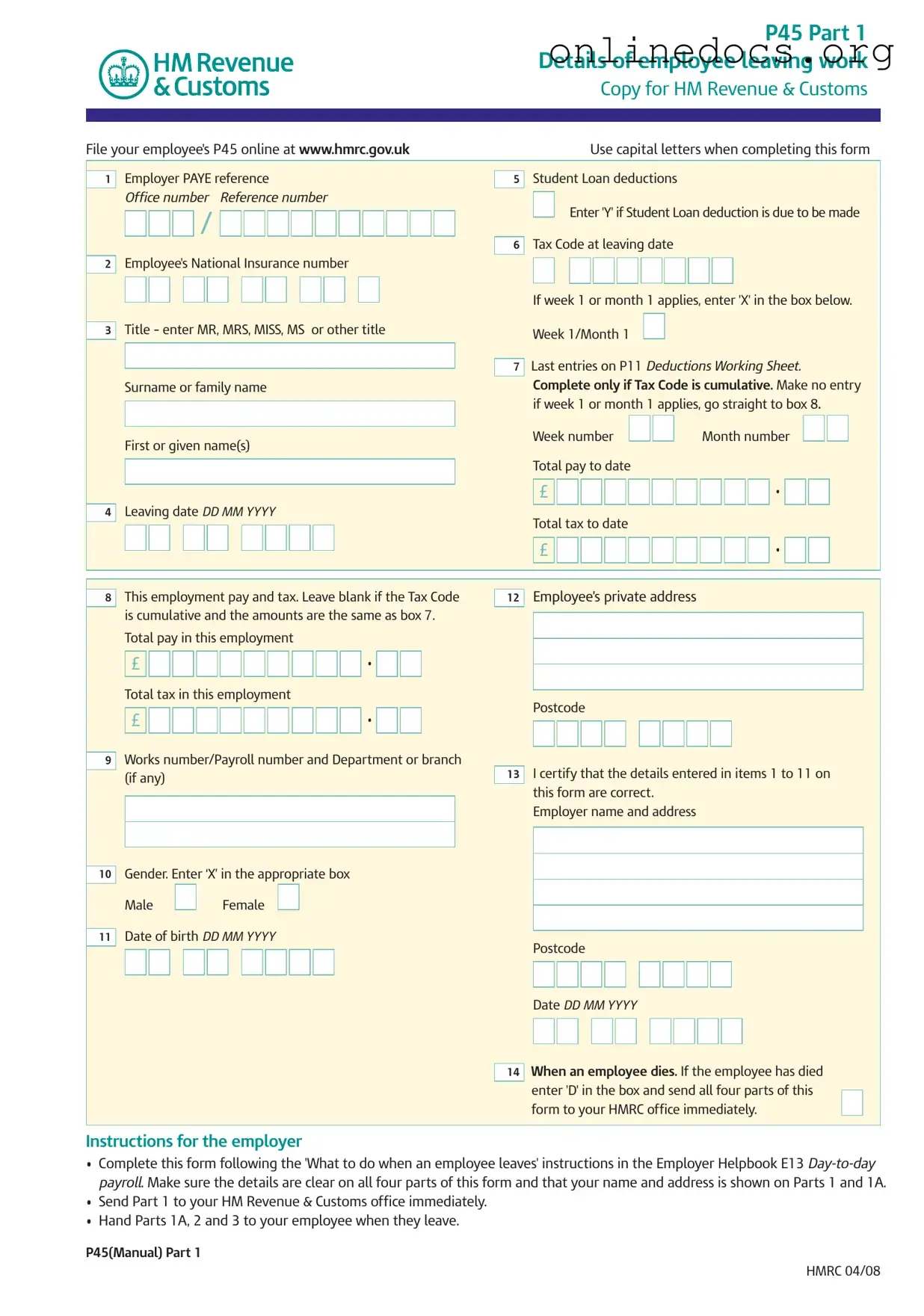The P45 form is similar to the W-2 form, which is used in the United States to report an employee's annual wages and the amount of taxes withheld. Both documents serve as official records of employment and tax information. While the P45 is issued when an employee leaves a job, the W-2 is provided at the end of the tax year. Employees use the W-2 to complete their tax returns, just as they would use the P45 to provide necessary information to a new employer or for tax purposes after leaving a job.
Another document that resembles the P45 is the 1099 form, particularly the 1099-MISC or 1099-NEC, which reports income earned by independent contractors and freelancers. Like the P45, the 1099 form details income earned over a specific period, but it is typically used for non-employment income. Both forms are essential for tax reporting, allowing individuals to report their earnings accurately to the tax authorities.
When it comes to estate planning, it's essential to consider documents like the Last Will and Testament, as they help individuals articulate their final wishes clearly. For those in Colorado, the All Colorado Forms provides the necessary resources to create a legally binding will that reflects one's desires for property distribution and care for loved ones after passing. This planning step is crucial for ensuring peace of mind and clarity for family and friends during difficult times.
The P60 form is also comparable to the P45. A P60 is issued to employees at the end of the tax year, summarizing their total pay and tax deductions for that year. While the P45 is used when leaving a job, the P60 serves as a year-end statement for ongoing employment. Both documents help individuals keep track of their earnings and tax contributions, aiding in tax return preparation.
In addition, the P11D form shares similarities with the P45. The P11D is used to report benefits and expenses provided to employees, while the P45 focuses on pay and tax details upon leaving a job. Both forms are crucial for ensuring accurate tax reporting, as they inform HM Revenue and Customs (HMRC) about an individual's financial situation. Understanding these documents helps employees manage their tax obligations effectively.
The final document to consider is the IRS Form 1040, which is the standard individual income tax return form used in the United States. While the P45 provides information about employment status and earnings at the time of leaving a job, the Form 1040 is used to report overall income for the tax year, including wages, interest, and dividends. Both documents are vital for tax compliance, as they help individuals declare their income and calculate their tax liabilities.
